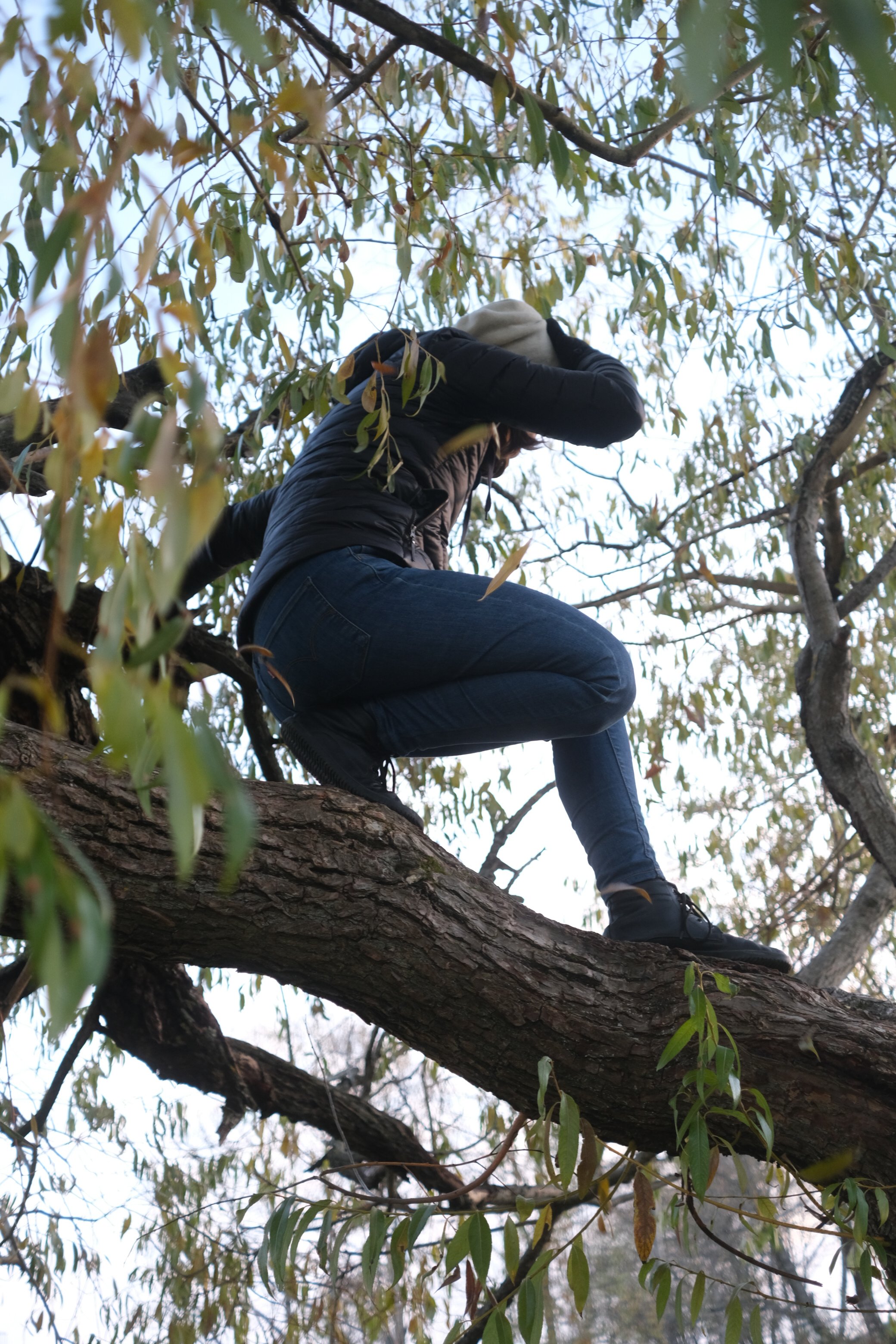stine & her trousers to climb trees in
In April 2022 I joined Stine at a community garden project. She had anticipated some knee and hip flexing as we shovelled the ground so some stretch in the trousers was essential. Stine also anticipated that the ground might be abrasive. Toughness was therefore an equally important characteristic to ease of movement. She had settled on a pair of jeans with a little elastic content. However, she now regretted that decision as the hardware from the waistband was digging into her abdomen as she loaded stones from the ground into a wheelbarrow. Her trousers restricted this bending action by tightening the fabric across her obliques. This particular sensation is a daily obstacle for Stine. It can become so overwhelming that she cannot concentrate on anything else. Over several meet-ups, in Stine’s home, we refined the description of this sensation as akin to that of a stranger slowly sliding their hand around your waist.
“The sensation approaches from behind. You can’t quite process it until it’s too late. Physically you feel restricted. Emotionally you feel violated. Socially you don’t want to cause a scene.”
When I asked Stine “how do you want your clothes to feel?” I was confused by her response given that the context of use would be in her office:
“I want to be able to climb trees … You didn’t ask me what I wanted to do in them. You asked me how I wanted to feel in them. I’m not necessarily going to climb a tree, but I’d like to feel that it’s a possibility.”
Over several subsequent meetings, we unpicked this statement together. Celia was expressing an aspirational emotional feeling she wanted her clothes to provide: freedom. Explicitly It was about freedom of movement. Implicitly it was about moving through your day freely; free from distractions, free from restrictions. Later, I would share this story with an occupational therapist specialising in sensory integration. The therapist noted that climbing is an excellent stimulant for the proprioceptive system. The effect can be both calming and invigorating, depending on the body’s needs. Climbing also engages the vestibular sensory system as the head is moving up and down. It also relies on the visual sense, not forgetting the tactile stimulation that Stine’s hands and feet receive.
At present we are doing just that, designing Stine office trousers that she can climb trees in. This has been an exciting iterative journey that places Stine’s moving body at the forefront of the design process.
This is an extract taken from a PhD which will be published in late 2024
